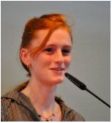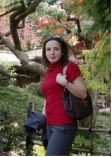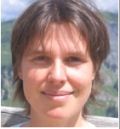AIRS 2nd Annual Meeting Abstracts
|
THEME 1 - DEVELOPMENT OF SINGING
SUB-THEME: 1.1 PERCEPTION AND PRODUCTION OF SINGING ** Preference for natural singing voice in pitch-matching and sounds categorization ** Yohana Leveque (Aix-en-Provence-France) yohana.leveque@gmail.com and Daniele Schon (CNRS-France) Abstract: Some studies on action imitation have shown an advantage for biological stimuli compared to non-biological stimuli, which could be due to the mirror system. We propose a parallel hypothesis: that auditory stimuli can be more accurately reproduced when the timbre is human than when the timbre is synthetic. Eighteen participants judged as poor singers and fourteen control participants performed a pitch-matching task, with vocal and synthetic models. We also evaluated their overall singing accuracy, as well as their fine-grained discrimination capacity. Our hypothesis was partially validated: the human model significantly helped poor singers. The effect of the human model on production might be linked to the use of motor representations in voice perception, which could help prepare the imitative vocal gesture. In a second study, we tested whether motor familiarity could impact sound processing. If producibility can help processing sounds, people should be able to categorize vocal sounds faster than non-vocal sounds and same gender voices faster than other-gender voices. Twenty-seven participants listened to brief natural or distorted male or female sounds in a singing voice, and were asked to categorize them as produced by a human being or a machine. Female participants were significantly faster in categorizing female natural voices than the other voices; in other words, they showed an advantage for sounds they could produce. Male participants showed faster reaction times for natural voices, whether male or female. While the impact of motor representations will need to be further tested by means of neuroimaging studies, these results clearly show the interest of using singing in order to explore very fundamental mechanisms linking production and perception. SUB-THEME: 1.1 PERCEPTION AND PRODUCTION OF SINGING ** Development of singing: A critical review and directions for future research ** Rayna H. Friendly (McMaster University), frindr@mcmaster.ca and Laurel Trainor (McMaster University) Abstract: Introduction: Singing, like speech, is a universal human behavior. Yet, we know little about its development. In this paper, we review literature about singing development and begin to define a direction for future research. A thorough literature review has revealed many inconsistent findings and limitations to our current understanding of children’s abilities. First, we are limited in what we know about the developmental trajectory of singing in terms of how accuracy and precision improve with age. Second, we have limited knowledge about the factors that influence the development of singing ability. Third, we have limited knowledge about the type and timing of vocal training that would be most effective for teaching children how to sing. Fourth, we have a limited knowledge about the best ways to go about measuring singing ability in children.Fifth, we have limited knowledge about the relationship between vocal perception and production in children’s ability to sing. This relationship is important to understand because it can indicate whether poor singers have a deficit in perception, production, both, or neither. Aim: The aim of this study is to highlight some of the limitations and possible reasons for opposing findings in the singing development literature. This can help us develop effective methods to objectively assess the singing abilities of young children at varying ages. Factors that will be considered include methodological limitations, conflicting ideas as to what should be measured, how recorded singing samples should be analyzed, and whether or not there might be sensitive periods during development when vocal training is critical to singing development in children. Main: Contributions to AIRS Findings from this review will be particularly useful for future investigations and collaborations from the AIRS initiative. We will propose methodologies that can be effectively used by members of AIRS, as well as other researchers interested in singing development, to measure singing in children, investigate whether there are critical ages for maximal effects of musical experience, and also investigate if there are differential effects of this experience at different ages throughout development. Implications: Discovering whether there are periods during the development of singing when children are particularly sensitive to vocal training and musical experience can have major implications for music education. This review will pinpoint methods that will be the most useful in assessing children’s singing abilities. Future studies and AIRS members can then use these methods to investigate the type and timing of vocal instruction that will lead to optimal singing development later in life, and inform the way we approach teaching children to sing.
SUB-THEME: 1.1 PERCEPTION AND PRODUCTION OF SINGING ** Pitch perception processes underlying singing ability ** Amy Fancourt (Goldsmiths, University of London) a.fancourt@gmail.com Fred Dick (Birkbeck College, University of London) and Lauren Stewart (Goldsmiths, University of London) Abstract: Introduction: There is general consensus among researchers that singing accuracy follows a developmental trajectory, relating to the maturation of perceptual, cognitive and physiological processes. Here, we investigate the development of pitch perception in children from 5 to 13 years, using robust psychophysical methods. We demonstrate that the ability to detect small pitch changes follows a different developmental trajectory compared with the ability to discriminate the direction of these pitch changes. The more prolonged time-course of the latter, along with individual differences in physiological maturation, has important implications for understanding feedback processes when singing in tune. Method: 145 musically untrained subjects in nine age groups (5, 6, 7, 8, 9, 10, 11, 13 year olds, and adults) took part in two psychophysical adaptive thresholding tasks designed to measure the ability to detect a change in pitch and to discriminate the direction of a pitch change. Thresholds were measured for digitally generated tones centred on 500Hz using a three interval, forced-choice procedure. Results: Analyses with age as both a categorical and continuous variable revealed that children from 5-13 years did not differ significantly from adults in their capacity to detect a pitch change. However, when discriminating the direction of pitch changes, age was a significant predictor of performance, with performance thresholds decreasing linearly from 6 to 11 years at which point adult-like thresholds were achieved. Discussion: The findings from this study indicate that the capacities to detect a change in pitch and to discriminate the direction of pitch changes follow different developmental trajectories. Maturation in the capacity to perceive and discriminate the direction of pitch changes may underlie the observed age-related improvements in singing accuracy and may be one aspect of musicality that is improved through training.
SUB-THEME: 1.2 MULTIMODAL (AUDIO/VISUAL/MOTOR) ASPECTS SINGING ** Influence of infants on maternal speech and singing ** Judy Plantinga (University of Toronto) judy.plantinga@utoronto.ca Sandra Trehub (University of Toronto) sandra.trehub@utoronto.ca Frank Russo (Department of Psychology, Ryerson University) russo@psych.ryerson.ca Abstract: When mothers vocalize to their infants by talking and singing, they provide infants with a rich multimodal experience. To date, however, attention has focused largely on the vocal aspects of that experience. Infants not only hear their mothers’ voice but they also see her accompanying movements and gestures. Presumably, multimodal aspects of mothers’ sung and spoken performances are also affected by the infant’s ongoing responsiveness. We investigated how the expressiveness of mothers’ speech and singing to infants was altered when the partners could hear but could not see one another. In one condition, mother and infant had full visual access to one another. In a second condition, visual access was removed from both parties. In a third condition, the mother could monitor her infant by means of a video feed, but the infant could not see the mother. Each of these episodes was a minute in duration. If maternal singing and speech are influenced primarily by the mother’s intention to maintain her infant’s engagement, then one would expect the mother to generate more expressive (i.e, work harder) when her infant is out of view. If, however, mothers’ vocal performances depend critically on feedback from the infant, then one would expect more expressive maternal performances when the infant is in view. All data have been collected and are currently being coded for expressive vocal and gestural features in the three conditions. A preliminary review of the data suggests that access to infants’ behavior contributes to the enhancement of maternal vocal and gestural expressiveness. The study is consistent with the objectives of Theme 1 (Development of singing and comparisons with speaking), in particular, with Subtheme 1.1 (Multimodal Analysis), under the supervision of subtheme leaders Sandra Trehub and Frank Russo. SUB-THEME: 1.2-MULTIMODAL (AUDIO/VISUAL/MOTOR) ASPECTS SINGING ** On the importance of visual aspects of performance in vocal pedagogy ** Lisa Chan (Ryerson University) lisa.chan@psych.ryerson.ca Darryl Edwards (University of Toronto) Frank Russo (Ryerson University) Abstract: Although vocal instruction typically focuses on issues such as control, tone quality and pitch, visual cues are also important for vocal performance. In this paper, we present a review of empirical studies on visual aspects of performance and examine their relevance for vocal pedagogy. Visual aspects of performance can influence structural and emotional judgments about music, such as interval size (Thompson, Graham & Russo, 2005) and emotional valence (Thompson, Russo & Quinto, 2008). In the case of interval size, head movement, eyebrow lifting, and mouth opening are all linearly related to pitch distance (Thompson & Russo, 2007). The effectiveness of visual cues does not depend on the extent to which observers are attending to the performance (Thompson, Russo & Quinto, 2008; Thompson, Russo & Livingstone, in press), which raises questions about how the audio-visual integration is achieved. Motion tracking and electromyography of observers reveals a subtle mirroring of visual aspects of performance (Livingstone, Thompson & Russo, 2009). According to the facial feedback hypothesis, producing a facial expression of emotion leads to the experience of that emotion. Thus, by unconsciously mimicking facial expressions, audience members might have rapid access to the performer’s intentionality. Given these findings, we argue the need for increased research and awareness on the role of visual cues in vocal pedagogy. Another issue we consider is whether training vocal control may interfere with visual expressiveness. To this end, preliminary data will be presented regarding the congruency of visual and auditory information in trained vs. untrained vocalists. SUB-THEME: SUB-THEME: 1.3 AIRS TEST BATTERY OF SINGING SKILLS ** The AIRS Test Battery in Estonia ** Marju Raju (Estonian Academy of Music and Theatre) marju.raju@gmail.com Abstract: This presentation gives an overview of applying the AIRS test battery in Estonia. The first part of the presentation focuses on adapting the test items and instructions into Estonian and describing the testing process. During this spring 26 children with different musical background (ages 2-12) have been tested in Estonia. In the second part, a short overview of the preliminary descriptive analyses of the data will be given. The presentation is illustrated with video clips from the testing.
THEME 2 - SINGING AND EDUCATION
SUB-THEME: 2.1- LEARNING TO SING NATURALLY ** Theoretical, methodological, and empirical considerations in singing ** Stefanie Stadler Elmer (University of Zurich Switzerland) stefanie.stadler@access.uzh,ch Abstract: Singing is a universal and biologically based ability that develops parallel with speaking or even precedes it. From the viewpoint of a structural genetic constructivism, singing emerges from the earliest vocal play - and it is the earliest musical expression. The prolongation of vowels - one of the culture-free defining features of singing - creates the impression of singing. Originally, singing is accompanied with positive emotional states (e.g., wellbeing). Singing enhances social attachment, feelings of social belonging, but also the reverse, social exclusion, thereby coining cultural identity. In social contexts, vocal sounds become meaningful and are symbolized, both by producing and by listening. Singing, as music making, is play; however, to achieve conventionalized forms of using the voice, the child has to learn cultural specific rules. Vocal and musical behaviours are highly adaptive and constructive. Development is a construction of actions, starting with sensori-motor activities. Vocal development starts at birth, and gradually adapts to the cultural surrounding and its conventions concerning language, music, and social rules. The organization of the actions adapts to the environment, and gradually is internalized as mental structures. Actions and thoughts become more and more differentiated, controlled, and conscious. The child approaches vocal sounds to musical and linguistic symbols through playing and imitating. There are huge individual differences regarding the development of the musical potential. The developmental course is not age-related, but can be conceptualized according to newly emerging qualities in the organization of actions and thoughts. Hypotheses about the developmental sequence are outlined as consecutive stages. Empirical examples are given to illustrate aspects of development. They are based on acoustical analyses and include very early and spontaneous song singing at age 1;8 years, and song inventions and song acquisition processes from older children, e.g., 9 years of age. SUB-THEME: 2.1 LEARNING TO SING NATURALLY ** Pitches and rhythms in songs of Brazilian children ** Beatriz Ilari (Federal University of Parana) beatrizilari@yahoo.ca and Vivian Agnolo Barbosa (Federal University of Parana) Abstract: Introduction: In spite of the great interest for Brazilian music in academic circles, little is known about the musical practices of Brazilian children. The few studies published to date have focused primarily on children who learn music in conservatories and special performance schools (a minority). Information on singing practices in naturalistic contexts is rare, although most Brazilian children do not have access to formal music education. The purpose of this ongoing study has been to document the singing practices of Brazilian children across the national territory. Method: Using tools of qualitative research (interviews, field notes, audio/videotaping), the authors have been documenting children's singing practices in loco, in different parts of Brazil (e.g., in the Amazon, in a MST camp, in local schools). Results: The analysis of musical components of a 49 songs suggest: (1) that songs by children living in communities that are heavily influenced by Afro-Brazilian musical traditions tend to be more rhythmic in nature, with fewer "exact" pitches; (2) that even when singing tonal songs, children seem to focus on rhythm and form, and not always on pitches; (3) for some musical genres (e.g., tambor de crioula), children seem to develop specific singing/performance techniques early on; (4) Movement and song seem to be intrinsically related. Discussion: Results from the present study raise the question of how singing develops in children living in multicultural and hybrid cultures, like Brazilian culture. Examples will be presented at the conference along with implications for music education.
SUB-THEME: 2.1 LEARNING TO SING NATURALLY ** Accent on music in the study of children’s musical cultures ** Megan Perdue (University of Washington) megan.perdue@gmail.com Patricia Shehan Campbell (University of Washington) Abstract: Much research is dedicated to the assumption that children possess a distinct musical culture, which is transmitted orally and exists most obviously on the playground. The music created does not mimic adult music, but reflects the needs and values of children’s society. Children engage in musical play both spontaneously (singing, moving rhythmically, and playing) and through singing games involving hand clapping, mimetic movement, skipping (or jumping), counting out or elimination, and ball bouncing, usually occurring in pair, ring, or line formations. While many popular children’s playground songs have survived hundreds of years in the oral tradition, many songs learned in the classroom for a Winter Concert will have been forgotten by spring. With the exception of patriotic song, “the retention and circulation of songs learned from teachers appears to be greater when the songs are also presented by other sources in the child’s environment” (Harwood, 1988, p. 195) purpose of this research is to collect and contrast information on the musical content of fifty-five collected children’s songs, including elements of tessitura, range, rhythm and form. Issues of text, thematic content, gender, social structure, and movement will also be addressed in relation to these musical elements. This research discusses curricular implications of these songs’ analysis and the importance of connecting children’s musical culture and classroom culture.
SUB-THEME: 2.2 FORMAL TEACHING OF SINGING ** Intonation in SATB vocal ensembles** Johanna Devaney (Schulich School of Music, McGill University) johanna.devaney@mail.mcgill.ca Jonathan Wild (Schulich School of Music, McGill University) Peter Schubert and Ichiro Fujinaga (Schulich School of Music, McGill University) Abstract: Introduction: We are interested in exploring how consistent professional singers are in their intonation practices. Specifically, we would like to explore how harmonic context impacts vertical and horizontal interval tuning. This paper describes an experiment we are currently undertaking on SATB ensemble performance. Method: The participants in the experiment are four professional singers from the Montreal-area who specialize in early music and regularly sing together in an ensemble. The experiment consisted of two parts. In the first part, each singer came in individually and sang a series of pitches against a recorded sequence of tones. The recorded sequence was a random ordering of six tones; the six tones included three equal-tempered pitches and three pitches detuned by a ¼ tone. The singers were asked to sing a range of intervals (including the unison) both simultaneously and sequentially. In the second part, the singers came into the recording lab together and sang a number of exercises under the direction of the ensemble’s conductor. Te exercises were designed to present the same semitones and whole tones in different harmonic contexts in different voices. Results: We are currently analyzing the results. Discussion: We are planning to add a third part to the experiment, where the singers again come in individually and sing against recordings of the other parts. The musical material would be the same as the second part of the experiment and the recorded parts would be retuned to other tunings (Just, Meantone). This would allow us to see the influence of the tuning of the other parts on the individual singer. This intermediary stage between the single voice matching and the ensemble recording will be useful as it will allow us to control the tuning reference point for each singer in the ensemble context.
SUB-THEME: 2.2 FORMAL TEACHING OF SINGING ** How do singers manage vowels in relation to the laryngeal mechanism? An acoustic and linguistic inquiry ** Sylvain Lamesch (LAM-IJLRA, Paris) lamesch@lam.jussieu.fr Michele Castellengo (LAM-IJLRA, Paris) Boris Doval (LAM-IJLRA, Paris) and Luiza Maxim (LAM-IJLRA, Paris) Abstract: Classical singers are trained to use all the vowels regardless of their predominant tessitura and laryngeal vibratory mechanism. Comparatively, Yodellers generally choose a given set of vowels depending on the mechanism they use: M1 (chest voice) or M2 (falsetto). In order to explore the possible relations between the laryngeal source and the resonance cavities, we have undertaken an acoustical study of Voice Range Profiles (VRP) - using different mechanisms (M1 and M2) and vowels - as well as a linguistic investigation of the singers’ verbal productions. 21 male and female singers produced crescendos and decrescendos on /a/, /i/ and /o/, from C3 to C5, in mechanisms M1 and M2. We recorded the sound signal in order to compute the vocal dynamics. VRPs were obtained for each singer and for each vowel, in M1 and M2 separately. At the end, the subjects filled a questionnaire concerning the vowels they prefer to sing in M1 and in M2, respectively. The questionnaire prompted individual evaluations and comfort or technique related comments from singers. The analysis of the questionnaire showed that singers prefer singing /a/ rather than /i/ in M1, and inversely in M2. The study of the VRPs showed that the upper limit is 10 dB louder for /i/ than for /a/ in M1, but not in M2. Consequently the vocal dynamic range is larger for /a/ than for /i/ in M1, and it is larger on /i/ in M2 than in M1, if compared with the dynamic range for /a/. In M1, producing a given level on /i/ could require a higher subglottal pressure. The processed acoustical data provided us with elements, which in turn allowed us to interpret more accurately the singers' verbal descriptions. SUB-THEME: 2.2 FORMAL TEACHING OF SINGING ** “Guru-sishya parampara”: a cultural examination of vocal pedagogical method in North India ** Hans Utter (Ohio State University) and Utpola Borah (Ohio State University) utpola@gmail.com Abstract: Introduction: Introduction and aim of contributing to AIRS Goals and Milestones India’s Guru-Sishya Parampara is a unique system of transmitting musical knowledge which can be traced back to the Vedic period (1st-6th centuries BCE). This oral tradition stresses embodied and experiential learning in formal and informal settings over a span of decades. This paper analyzes the processes of teaching and learning Indian vocal music through native and non-native viewpoints, examining the influence of culture-specific environments on cognitive and sensory modalities. We hope to contribute to AIR’s goals of understanding processes of singing and education, cross-cultural understanding, and the interrelations of perception and production of music. Method: The culturally specific modes of teaching and learning Indian vocal music will be examined from the perspective of a native, professional vocalist and a Western-trained musician. Indian classical music employs a system of microtonal inflections that are often imperceptible to the Western ear, which only be taught orally. The impact of methods of teaching and learning in early childhood will be compared with resultant differences in pitch perception, voice cultural, and sensory perception. Results: This paper will demonstrate how and why different music styles require distinct pedagogical methods, and offer some hypothesis as to how the gurusishya parampara utilizes innate human learning processes to transmit knowledge through an embodied process that simultaneously functions on multiple cognitive, kinesthetic, and emotional modalities. Finally, the possible cognitive and social implications of cross-cultural music acquisition will be examined. Discussion: We hope to open dialogue on the how differing systems of teaching and learning offer a window both on culture and cognitive development.
SUB-THEME: 2.3 TEACHING THROUGH SINGING ** Singing voice and phonetic acquisition ** Sandra Cornaz (GIPSA Lab, Grenoble & Turin, University, Italy) scornaz@gmail.com Nathalie Vallee (CNRS Dept. 34) and Nathalie Henrich (GIPSA Lab, University of Grenoble) Abstract: Physical and vocal exercises adapted for speech and singing improvement are numerous and various. However, the field of language teaching does not often use those tools. Our research aims at a) highlighting the validity of a pedagogy based on those types of exercises - especially sung ones - of French as a foreign language (FFL); b) understanding how much and why singing, as pitches and duration variation in a temporal dynamics, would impact positively phonetic and phonological performance in a non native language. To reach this goal, two experimentations are developed: the first one is global and transversal while the second one is made of shorts and isolated tasks. The first experimentation consists in observing and analyzing, via regular recordings during a 9 hour phonetic correction, the progresses done by Italian native adults' speakers in French oral vowel perception and production. Half of them are involved in a traditional lesson of French phonetic; the rest of the group is taught the same base, plus additional exercises usually used for singing-voice practice. In the second experimentation, Italian subjects are not involved in French preliminaries or current lessons. They have to discriminate and product phonemes from dissimilar stimuli, among which the pitch and the duration can change but never the vowel. Both experimentations are in process. Nevertheless for the transversal experimentation, interesting results appear from the pilot study done in Italy. Learners who were taught with the common method with additional singing-voice exercises and specific tasks for singing practice reach higher competences at the end of the formation in French oral vowel discrimination and production. In the next months, the first experimentation will be tested on a greater number of subjects. The second experimentation, dealing with singing characteristics like duration and pitch, would let us know more about their shared or individual role for the language acquisition. Also, we hope to ascertain new factors for FFL phonetic acquisition when singing-voice and its practice become a main part of a didactical method for an Italian adult public. SUB-THEME: 2.3 TEACHING THROUGH SINGING ** Can we teach vocabulary to preschoolers via singing? And more ** Jennifer Sullivan (St. Francis Xavier University) jfsulliv@stfx.ca Abstract: The AIRS battery is used to test young children to see the development of singing skill. However, research on singing is not only important for seeing how singing develops but also for seeing how singing can influence learning. The studies being conducted in the language and singing lab at St. Francis Xavier University are investigating the use of singing simple songs with children to enhance language development. We hope to see benefits from singing practice in both singing development and vocabulary development in typically developing children and in general expressive language skills in children with developmental delays.
THEME 3 - SINGING AND WELL-BEING
SUB-THEME: 3.1 SINGING AND CROSS-CULTURAL UNDERSTANDING ** An exploration of the learning and performance practices of song & dance in cross-cultural contexts ** Andrea Emberly (University of Western Australia) andrea.emberly@uwa.edu.au and Jane Davidson (University of Western Australia) Abstract: Ethnomusicologist John Blacking proposed that all humans have the potential to be musical. The current study has investigated his ideas by focusing on how songs and dances are transmitted within a cultural group and the ways in which the two forms are integrated in embodied learning. Specifically, the research explores the role of formal and informal education in perpetuating and sustaining the learning of songs and dances in a range of cultural contexts. Data from South Africa demonstrates that Venda children from the Limpopo Province learn songs and dances both within the formal school education system and informally in the community, as proactive means to safeguard musical traditions. It is expected in Venda communities that everyone participates and develops high-level competencies. In musical interactions, crucial social and cultural information not otherwise expressed is communicated through the teaching, learning and performance of song and dance. These musical practices in Venda culture persist across the lifespan, with transgenerational participation that relies on singing as a means to communicate culture and maintain tradition. In Australia our study traces children who auditioned to attend a specialist arts school in order to learn musical theatre practices - with its integration of song and dance - to focus on the attainment of professional performance excellence. The student efforts are focused for specialist performance outcome and are far less integrated into common cultural practice as in the case of the Venda. In Bali, all children learn traditional song and dance through school and in everyday village life, but as these individuals grow, specialization on the basis of talent is encouraged, and adult participation diminishes leaving only those with specialised training in song and dance performance roles. Together, these data have the capacity to expand understanding of how song and dance, and the intrinsic integration of the two forms, can be used as a means of transmitting crucial cultural values. The fundamental questions of this project explore themes across the AIRS research initiative with particular emphasis on Theme 2 - singing and education and Theme 3 ^ singing and wellbeing. Subtheme 2.1, with emphasis on learning to sing informally, informs particular aspects of this research project. The research is currently in progress with field data collected from South Africa, Australia and Bali.
SUB-THEME: 3.2 SINGING AND INTERGENERATIONAL UNDERSTANDING ** Intergenerational curricula, multimodal communication, and identity options: Findings from a study of an IG art program as a basis for a study of IG singing curricula ** Zheng Zhang (University of Western Ontario) Rachel Heydon (Western University) rheydon@uwo.ca Abstract: This poster reports on those aspects of a qualitative case study of an intergenerational (IG) art curriculum that could be relevant for the development of an IG singing curriculum. The goal of the research is to understand the constituents of successful IG curricula such that they can create expansive communication learning opportunities and identity options for young children and older adults. The study found that when compared to the adults, children’s communication and indentify options are less restricted, and IG curricula could address the need to keep these opportunities and options open throughout the life span through measures such as sustained, meaningful IG programs that focus on supporting participants’ facility with a variety of communicational modes and media. The findings of the art study are now being transferred to a study of the development and implementation of IG singing curricula which is making inquiries into at least three areas of IG singing programming: Intrapersonal characteristics: what is the relationship between communication options, interests, identity options, and their connection to young children’s and older adults’ well-being in the context of IG singing curricula?; Interpersonal factors: how are reciprocal relationships forged in and through IG singing curricula?; Systemic features: what structural, organizational supports are necessary for successful IG singing curricula, and how are larger social Discourses instantiated (and perhaps disrupted) within IG song and curricula?
SUB-THEME: 3.3 HEALTH BENEFITS OF SINGING ** Group singing, wellbeing and health: A systematic review ** Stephen Clift (Sidney De Haan Research Centre for Arts and Health, UK) Jennifer J. Nicol (University of Saskatchewan) jennifer.nicol@usask.ca Matthew Raisbeck (Sing for Your Life, Ltd, UK) Christine Whitmore (Public Health Directorate, NHS Eastern and Coastal Kent, UK) Ian Morrison (Sidney De Haan Research Centre for Arts and Health, UK) Abstract: Introduction: Group singing is one of the most widespread forms of active musical participation in the Western World (Chorus America, 2009); but, beyond its intrinsic value and associated pleasure, is there any evidence for real and measureable impacts on the health and wellbeing of those participating? Method: A review of the existing research literature on group singing, wellbeing and health was completed by searching four databases (Medline, Embase, Psychinfo, Cinahl) using the primary search terms: singing, health, wellbeing, quality of life and music therapy. Strategies implemented to identify additional research included using Google Scholar, contacting authors, and searching reference lists in papers. Excluded from this review were studies concerned with individual singing, individual music therapy interventions involving singing, studies of song writing as a form of therapy, care-giver singing, and research in which singing was combined with other forms of music making or creative activity thus making it impossible to identify specific outcomes associated with singing. Given the developing nature of the field, the aim was to provide an overview of the range of work published without applying a stringent quality screen. Results: A systematic approach to identifying published research in English from 1985 served to identify 51 papers reporting on 48 studies worldwide. Studies were categorised into four groups and details of objective, context, sample, method and findings were reported in tabular form. Most studies were conducted in English speaking and Nordic countries and reported from 2000 onwards. Discussion: There is evidence of increased research interest in this field. However, many studies are small scale and exploratory, with only a few large-scale surveys and well-designed experimental studies. The diversity and variations in quality of the research corpus makes it difficult to draw evidence-based conclusions regarding the value of group singing for wellbeing and health. Nevertheless, there are indications that singing can be beneficial for psychological and social wellbeing, but less clear evidence of benefits for physical health.
SUB-THEME: 3.3 HEALTH BENEFITS OF SINGING ** Using singing to speak after stroke ** Dawn Merrett (University of Melbourne, Florey Neurosciences Institutes, BRAMS) dawnmerrett@gmail.com Isabelle Peretz (BRAMS & Universite de Montreal) Graeme Jackson (University of Melbourne & Florey Neurosciences Institutes) and Sarah Wilson (University of Melbourne & Florey Neurosciences Institutes) Abstract: Introduction: Previous research has shown that singing therapy may facilitate language recovery in individuals with language disorders, such as non-fluent aphasia, after stroke. Despite some evidence for the efficacy of singing, the mechanism(s) by which it might promote language recovery are still uncertain. To probe these issues, this project is investigating the influence of intensive singing training on brain organization and on mood, music, and language outcomes in a group of neurologically-healthy individuals and a group with non-fluent aphasia. Method: Participants are given questionnaires to determine their hand preference, music and language background, medical history, and mood. Additional assessments include estimation of IQ, memory, attention, musical abilities, and verbal generation. Participants with language impairment also undergo a detailed investigation of language and speech function to fully characterize their language difficulties. Behavioural assessments are used to evaluate mood, music, and language abilities and functional Magnetic Resonance Imaging is used to assess patterns of neural activation both before and after singing training. Thirty hours of standardized training are delivered using a digital video-based program modeled on the principles of Melodic Intonation Therapy. Results: While data collection is ongoing, behavioural results from a pilot participant with non-fluent aphasia showed objective improvement in phrase repetition ability and in the generation of trained phrases in response to questions, as well as clinical improvements in mood, attention, and use of verbal communication in daily life. Discussion: This project will evaluate the influence of singing training on neural organization, mood, and behaviour. Broadly, it will provide insight into (1) explanatory mechanisms of singing therapy for language rehabilitation and (2) the interaction of music and language in the brain.
SUB-THEME: 3.3 HEALTH BENEFITS OF SINGING ** Mama Music: Promoting health and harmony in the lives of adolescent mothers and their infants with singing ** Jean Emmerson (University of Saskatchewan) jean.emmerson@usask.ca Abstract: Introduction: Mama Music is an investigation into the use of singing to promote health and harmony in the lives of adolescent mothers and their infants. Through both group and individual singing, we propose to facilitate infant social-emotional development, strengthen the mother-infant bond, and enhance adolescent mother coping ability. We expect to work with about ten youth and their infants for three to four months in this action research study. This research contributes to the AIRS project’s stated goals, and will provide a foundation for continued advancement of knowledge within theme 3.3. We also anticipate opportunities for cross-collaboration of ideas with themes 1 and 2. Method: The study will utilize multiple methods (e.g., standardized measures, interviews, arts-based strategies) to describe and evaluate the program, which will involve a mother-infant group and a mothers-only group, developed and implemented in partnership with a Saskatoon secondary school that provides daycare facilities and youth parenting classes alongside traditional curricula. A variety of children’s songs will be taught to facilitate mother and infant connection and promote infant social-emotional skills, such as turn taking and interacting. The sessions for the mothers will focus on singing for health, e.g., songwriting and self-expression, favourite songs and personal identity, and singing for stress management and the fulfillment of emotional needs. Results: Work in progress; research data collection anticipated to begin January 2011. Discussion: Research reveals that adolescent motherhood is linked to poverty and a cycle of future adolescent mothers in poverty (Pogarsky, Thornberry & Lizotte, 2006). High schools offering these youth parenting classes along with traditional curricula and daycare facilities for their infants can help break this cycle (Deutscher, Fewell & Gross, 2006). The literature indicates support for the therapeutic use of music to reinforce adolescent coping skills and increase feelings of wellbeing (Saarikallio & Erkkila, 2007). Research also suggests that singing can strengthen mother-child bonging 9O’Gorman, 2007). As yet, no studies have examined the use of singing to enhance teen mothers’ health and increase harmony in their interactions with their infant. We plan to develop a model to connect these areas.
4. DIGITAL LIBRARY
** Building intelligent web-based audio tools for interacting with large collections of audio: Cantillion and Orchive ** George Tzanetakis (University of Victoria) gtzan@cs.uvic.ca Abstract: Advances in audio compression and storage technology have made possible the creation of large digital archives of audio. Interacting with such archives can be a daunting task as most existing audio tools are centered around processing individual audio recordings. Digital library tools provide support for large collection but mostly through meta-data and the corresponding audio is simply a file to be downloaded. In this talk I will describe our efforts in building intelligent, web-based audio tools for interacting with large collection of audio. More specifically, I will describe and demonstrate two projects: 1) Cantillion: an interface for analysis of religious chants and folk songs 2) Orchive: a large archive of hydrophone recordings with Orca vocalizations. These tools combine ideas from human-computer interaction and visualization with signal processing and machine learning to provide more effective interactions. I will finish my talk with how I envision such tools can be used to advance interdisciplinary research in singing.
** Short Introduction to the PARADISEC database ** Kate Stevens (University of Western Sydney) kj.stevens@uws.edu.au Abstract: PARADISEC (Pacific and Regional Archive for Digital Sources in Endangered Cultures) offers a facility for digital conservation and access for endangered materials from the Pacific region, defined broadly to include Oceania and East and Southeast Asia. Our research group has developed models to ensure that the archive can provide access to interested communities, and conforms with emerging international standards for digital archiving. PARADISEC collaborates with the other groups to promote good practice in field documentation and digital archiving of endangered languages. At December, 2009 PARADISEC’s collection contains 2520 hours of digital audio and video files on 4.43 TB of disk space. A catalogue of this material is available at the link given in the right hand frame of this page. 614 languages from 60 countries are represented in PARADISEC’s collection.
5. STAKEHOLDERS
** The Vancouver International Song Institute- A nexus for change ** Rena Sharon (UBC/VISI) rena.sharon@ubc.ca Abstract: Introduction: The Vancouver International Song Institute (VISI), and AIRS-affiliated project, is internationally renowned for its groundbreaking interdisciplinary work with interpretation, pedagogy, performance, practice and research with a current specialization in the genre of Art Song. It is held annually in June at the School of Music of the University of British Columbia in Vancouver, Canada, with visiting faculty from top music institutes including Juilliard, Eastman, Guildhall, Centre de la Melodie Francaise, 10 Canadian Universities are represented at VISI, and its 50 university-level student participants come from across North America. VISI’s 2010 program included presentations by AIRS researchers Professors Darryl Edwards and Frank Russo. Method: Over the past 4 years, VISI has functioned as an experimental environment for broad-spectrum interdisciplinary approaches to training for young artists, teachers, and scholars and an array of new practices in study and performance. The impetus for the creation of VISI was the advocacy of Art Song, a poetry-music fusion spanning thousands of years of global poetry in a repertoire comprising over 100’000 songs. The Art Song genre is currently at risk of acquiring “endangered species” status in North America, as evidenced thought sharp declines in concert attendance and diminished professional training programs. VISI’s researchers identify causes of attrition and explore new practices to generate renewal in this powerful artistic and historical legacy. In the search for solutions, VISI’s training programs are linked to SONGFIRE Theatre, a new multi-media production project for Art Song Theatre and Film emerging from work developed at UBC since 1986. This work is also linked to research on the relationship of gesture inhibition or free movement to vocal production, embodied interpretation, and audience perception of Art Song. The presentation offers a brief philosophical context for VISI’s SONGFIRE Theatre project and integrated studies for artists and scholars. As well, it will open discussion regarding the possible benefit of using annual VISI session for Pacific Coast AIRS workshops and meetings in diverse song-related Development, Cognition, and Well-Being themes. VISI currently hosts symposia for the Music therapy Association of BC, a Song Scholarship Retreat with links to humanities, workshops for the general public in Global Song Traditions, Vocal Improvisation and Choral Singing. VISI’s mandate is designed to expand encompassingly to accommodate and link relevant strands of research and creation.
|
BIOGRAPHIES
Yohana Leveque has a Speech Therapist Degree, Master's Degree in Language Sciences, currently PhD student in Language Science (Aix-en-Provence-France), supported by a grant of 3 years from the National Research Department.
Daniele Schon has a Ph.D. in Neuroscience, University of Trieste, Italy & University of Aix-Marseille II; Research Permanent Position at the Institute of Cognitive Neuroscience of the Mediterranean, CNRS, Marseille, France.
Rayna Friendly is a PhD candidate from McMaster University’s department of Psychology, Neuroscience and Behavior in Hamilton, Ontario. As a member of the Infant Auditory Lab, Rayna works under the supervision of Dr. Laurel Trainor: a leading researcher in the field of auditory development and music cognition and perception. Rayna has been singing in school choirs and small ensembles for over 10 years and is currently a member of McMaster University’s Vocal Ensemble. In her research, Ryana has extended on her interest of the voice and of singing, by studying the development of voice discrimination during the first year of infancy, as well as the development of singing ability in young children. Rayna loves working in a field that allows her to combine her interests of psychology and music, and looks forward to interacting with the many vocal specialists at this year’s upcoming AIRS meeting.

Amy Fancourt has a BSc Honours in Psychology from Durham University, an MSc in Cognitive Neuropsychology from the University of London, Birkbeck College and is currently working towards a PhD in psychology at The University of London, Goldsmiths College. The focus of her PhD is to investigate music perception and cognition in children with atypical language development.
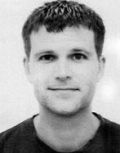
Fred Dick is Senior Lecturer in The Department of Psychological Sciences, Birkbeck College, The University of London.
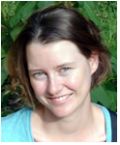
Lauren Stewart is Senior Lecturer and Director of the MSc in Music, Mind and Brain in The Department of Psychology, Goldsmiths College, The University of London.

Judy Plantinga is a postdoctoral fellow in Dr. Sandra Trehub’s Auditory Development Lab at University of Toronto. She earned her PhD in Psychology, Neuroscience, and Behaviour from McMaster University. Her main area of interest is the development of pitch perception and its relation to the development of music and language abilities. Web page: University of Toronto Infant Child Centre

Frank Russo is Assistant Professor of Psychology, Director of Psychological Science Training and Director of the Science of Music, Auditory Research and Technology (SMART) lab at Ryerson University. After earning his Ph.D. from Queen's University at Kingston (2002), he was awarded the Shaw Post-Doctoral Prize in Acoustics (Canadian Acoustical Association) and completed Post- Doctoral Fellowships in Music Cognition and Hearing Science. His research is situated at the intersection of music, mind and technology with current projects investigating multisensory integration, assistive technology, sonification, electrophysiological response, and the role of mimicry in communication of emotion (see lab website for more info, http://www.ryerson.ca/smart). He has published over 20 peer-reviewed articles and has delivered over 100 presentations. Other notable work includes consultation with U.S. and Canadian Departments of Transportation on Locomotive Horn Effectiveness, and co- invention of a sensory substitution technology supporting perception of music by deaf and hard of hearing individuals (Emoti-Chair). Frank currently serves on the editorial board of Psychomusicology: Music, Mind and Brain and the board of directors of the Canadian Acoustical Association and the Society for Music Perception and Cognition.

Sandra Trehub After undergraduate studies in Economics and Philosophy, Sandra Trehub pursued graduate studies in Psychology at McGill University, receiving her doctorate in 1973. Since that time, she has been at the University of Toronto, where she is currently Professor Emeritus of Psychology. Professor Trehub has published extensively on auditory perception in infants and young children, infants' perception of music, and parents' songs to infants. Most of her research is conducted in her laboratory at the University of Toronto. From time to time, however, she visits isolated villages around the world to observe mothers' use of music in the course of child care.

Lisa Chan is a 2nd year M.A. psychology student at Ryerson University, specializing in music cognition and perception. She also holds an A.R.C.T. in both Piano Performance and Piano Teaching.

Darryl Edwards tenor, is Head of Voice Studies at the University of Toronto, and Artistic Director of the Centre for Opera Studies in Italy.
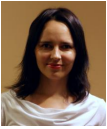
Marju Raju is a doctoral student of musicology in Estonian Academy of Music and Theater. She has a M.Sc. in psychology (2007) from Tallinn University and a master’s degree in musicology (2008) from Estonian Academy of music theatre.

Stefanie Stadler Elmer is an Associate Professor of Psychology at the University of Zurich and a lecturer at the Teacher Training University at Luzern, Switzerland. She teaches music and language development, and research methods. Since the early 1980s she has been doing research in Developmental and Music Psychology (Switzerland, Germany, USA). Her research has been supported by several grants and fellowships. She published two books (in German), Play and Imitation - Development of musical activities (2000), and Children Sing Songs - Cultivating one's Vocal Expression (2002) and many articles and chapters in German and English. Her main interests concern the development of singing and speaking, music and language in relation to the structured cultural environment.

Beatriz Ilari holds degrees from McGill University (PhD), Montclair State University (MA), and University of São Paulo (undergraduate). She is currently co-editor of IJME-Research and Associate Professor of Music Education at the Federal University of Parana (UFPR) in Curitiba, Brazil, where she created and directed for 5 consecutive the program "Musicalizacao Infantil" for children 0 to 12. Her research interests include musical development, early childhood education, and the social psychology of music.

Vivian Agnolo Barbosa graduated with honors from UFPR and is an early childhood educator. She teaches music for children in several schools in Curitiba and in the program Musicalizacao Infantil. She is also working towards a master's degree in early childhood education at the Catholic University of Paraná.
Megan Perdue recently earned her Master of Arts in Music Education from the University of Washington. She holds a Bachelor of Arts degree in music from the University of Oregon. Past presentations include posters at the 2010 College Music Society Northwest Conference and 2009 MENC Northwest Conference. Mrs. Perdue will assume a position as a music teacher in the Ross Valley School District in San Anselmo, California, in August of 2010. As a performer, she has previously sung as a member of the University of Washington Chamber Singers, Oregon Bach Festival Chorus, Eugene Symphony Chorus, Divisi Womens’s A Cappella, and the University of Oregon Chamber Choir and University Singers. Accompanying credits include the Oregon Bach Festival, University of Oregon Opera Ensemble, University of Oregon University Singers, and Oregon Children's Choir. She also sits on the board of Seattle Symphony's WolfGang and is an active member of MENC, CMS, ACDA, and IFCM.
Patricia Shehan Campbell is Donald E. Peterson Professor of Music at the University of Washington, where she teaches courses at the interface of education and ethnomusicology. She is the author of Songs in Their Heads (1998; 2010, 2nd edition), Musician and Teacher: Orientation to Music Education (2008), Tunes and Grooves in Music Education (2008), Teaching Music Globally (2004) (and co-editor with Bonnie Wade) of Oxford’s Global Music Series, Lessons from the World (1991/2001), Music in Cultural Context (1996), and co-author of Music in Childhood (2006, 3rd edition) and numerous publications on content and method of teaching the world’s musical cultures. She has lectured on the pedagogy of world music and children’s musical culture throughout the United States, in much of Europe and Asia, in Australia, New Zealand, South America, and South Africa. Her training is in Dalcroze Eurhythmics, as well as in piano and vocal performance, with specialized study in Bulgarian choral song, Indian (Karnatic) vocal repertoire, and Thai mahori. She serves on the editorial boards for Psychology of Music (U.K.), the Journal of Research in Music Education (U.S.), and Research Studies in Music Education (Australia). Campbell is a board member of Smithsonian Institution’s Folkways and the nationally syndicated weekly radio program, American Routes, and is Vice-President of the Society for Ethnomusicology. She coordinates university-community music partnership projects, including Music Alive! in the Yakima Valley, First Band at First Place School, the Laurelhurst Music Program, and musical exchanges at the Yakama Nation Tribal School.

Johanna Devaney is a Montreal-based researcher focused on studying and modeling performance practice. She is currently working on her PhD in the Department of Music Research at the Schulich School of Music of McGill University, where she works with Ichiro Fujinaga and Jonathan Wild. Johanna holds an MPhil degree in Music Theory from Columbia University, where she worked with Fred Lerdahl and Dan Ellis, as well a BFA in Music and an MA in Composition from York University in Toronto, where she taught for several years in the areas of Digital Music and Music Theory. Johanna has published her research in the Journal of Interdisciplinary Music Studies and Ex Tempore and presented her work at numerous international and national conferences, including the International Conference on Music Perception and Cognition (ICMPC), the International Computer Music Conference (ICMC), and the annual meeting of the Society of Music Theory (SMT). She is a student member in both the Center for Research in Music Media and Technology (CIRMMT) and the International Laboratory for Brain, Music and Sound Research (BRAMS). Website: http://music.mcgill.ca/~devaney
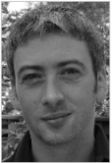
Jonathan Wild is assistant professor at McGill University's Schulich School of Music, where he teaches theory, analysis and composition, and currently chairs the Music Theory Area. He holds a Ph.D from Harvard, and Bachelor's and Master's degrees from McGill. His publications and conference presentations include work on mathematics and music, historical and speculative tuning systems, chromaticism in late nineteenth-century music, post-tonal analysis, and computational music theory. He is also a sought-after composer, especially of vocal music--the Hilliard Ensemble regularly perform several of his works.

Peter Schubert came to Montreal from New York City, where he founded and directed Opera Uptown and The New Calliope Singers, a group renowned for its commitment to modern music during its fifteen-year career. The group presented over fifty premieres and released a critically acclaimed CD entitled ""New Cantatas and Madrigals."" Since 1991, he has conducted the highly respected Montreal-based group, The Orpheus Singers. He founded VivaVoce, a professional ensemble, in 1998. That group won an Opus Prize and released a CD on the Naxos label. Schubert holds a Ph.D. in musicology from Columbia University, and is currently an Associate Professor at the McGill University Faculty of Music. Schubert is the author of a groundbreaking and highly regarded textbook, Modal Counterpoint, Renaissance Style (Oxford University Press, 1999, 2nd ed. 2008), and with colleague Christoph Neidhoefer he also co-authored Baroque Counterpoint (Prentice-Hall, 2005).

Ichiro Fuginana is an Associate Professor and the Chair of the Music Technology Area at the Schulich School of Music at McGill University. He has a bachelor’s degrees in Music/Percussion and Mathematics from University of Alberta, and a Master’s degree in Music Theory, and a PhD. In Music Technology from McGill University. In 2003-4, he was the Acting Director of the Center for Interdisciplinary Research in Music Media and Technology (CIRMMT) at McGill. In 2002^3, he was the Chair of the Music Technology Area at the School of Music. Before that he was a faculty member of the Computer Music Department at the Peabody Conservatory of Music of the Johns Hopkins University. Research interests include music theory, machine learning, music perception, digital signal processing, genetic algorithms, and music information acquisition, preservation, and retrieval.
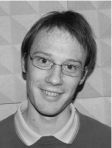
Sylvain Lamesch After earning an engineering degree and a master degree (MSc) in musical acoustics, Sylvain Lamesch completed his doctorate in January 2010 in the field of singing voice acoustics. His goal was to study the relationship between a singer's perception of his or her voice and various aspects of the lyrical vocal technique, reinforcing these observations with acoustic correlates. More generally, Sylvain is interested in studying the relationship between the practice of singing and the acoustic descriptions of this art form. He himself is a musician (a classical guitar player and a tenor). He has presented papers at different international conferences as well as at summer-schools about the voice, acoustics, and interdisciplinarity. He is a member of the French society of acoustics. Since 2008, he has organized interdisciplinary half-day workshops on the singing voice. Website: http://www.lam.jussieu.fr/Membres/Lamesch/index.html
Michele Castellengo Websites: http://www.lam.jussieu.fr/Membres/Castellengo/index.html and http://www.med.rug.nl/pas/Conf_contrib/Castellengo/Castellengo_bio_touch... Education and professional experience: Music Teacher (secondary school); High degree in musicology (Sorbonne,1963). Doctor in Acoustics (1976, University Paris VI). Researcher at the CNRS (1982 - 2003). Professor of Musical Acoustics at the National Conservatory of Music in Paris. Head of the « Laboratoire d’ Acoustique Musicale (1983-2003).Presently Emeritus Director of research at the CNRS Research: Flutes and organ acoustics (thesis). Perception of musical sounds; musical cognition. Speech synthesis (1967-1973) and acoustics of singing voice: intelligibility and efficiency of singing voice, perception of short vibrated notes, vocal trill, diplophonic voice; vocal techniques related to laryngeal mechanisms (voix mixte, Iranian tahrir). Musical experience: Harpsichordist and organist Papers 2009 - Roubeau B., Henrich N., Castellengo M., Laryngeal vibratory Mechanisms: the notion of vocal register revisited; Journal of voice, 23 (4) p.425-438 2005 - Castellengo M. - Manuel Garcia jr, a clear-sighted observer of human voice production. Logopedics Phoniatrics Vocology, 30, p.163-170 2004 - Castellengo M., Chuberre., Henrich N., - Is Voix Mixte, the Vocal Technique Use to Smoothe the Transition across the two Main Laryngeal Mechanism, en Independent Mechanism ?; Proc. of the International Symposium on Musical Acoustics, Nara, Japan.
Luiza Maxim is a Ph.D. candidate in linguistics (http://www.lam.jussieu.fr/Membres/Maxim/index.html) Areas of interest: Sensorial lexical descriptors, Linguistic resources and strategies used to express sensations, analysis of expert and common sense discourse concerning sensorial knowledge, epistemic sources related to sensations (senses, expert knowledge, common sense), social cognition, sensori-motor grounding of cognition. Thesis Topic: My research consists of a linguistic analysis of data selected from interviews given by singing teachers around the notion of vocal quality and it focuses on the linguistic strategies used by subjects to construct their knowledge in situ. The analysis is carried out at multiple linguistic levels: semantic, epistemic, lexical, discursive, enunciative and prosodic. I also focus on the relation between the speaker and his/her object of expertise constructed discursively. While grounding my research in a linguistic framework, I refer to theories from epistemology and social cognition which deal with the collective, socially distributed character of different types of knowledge (scientific and sensorial, among them). Grants and teaching experience: 2010 -Temporary teaching position (ATER) at Paris 3 Spring 2008 Visiting scholar at the University of Massachusetts Amherst 2006-2009 Recipient of a PH.

Hans Utter is currently a PhD. candidate in ethnomusicology at The Ohio State University. His current research focuses on the Imdad Khan Gharana, including a detailed study of Ustad Vilayat Khan’s sitar and vocal techniques. He has conducted research in cognitive ethnomusicology on entrainment with nonperiodic music. Hans has worked as a lecturer in musicology at Ohio State University, as a course writer, and as a visiting consultant at several universities. The AIRS project parallels his recent research into the neurophysiology of music performance He is the author of Trance, Ritual, and Rhythm: The Cult of Mahasu Deota in the Western Himalayas (B.R. Rhythms 2010). A disciple of sitarist Ustad Shujaat Khan, he has performed in America, Canada, Europe, and India.
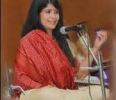
Utpola Borah is an ethnomusicologist, educator, cultural archivist and performer of Hindustani (North Indian) Classical music. She completed her Ph.D. at the time University of Delhi, India. Utpola’s extensive research on the Bihu songs of Assam formed the basis of her book Bihu Festival of AssamMusic Dance & Performance (2005). Her varied experience at the Archive and Research Centre for Ethnomusicology (AIIS), the Indira Gandhi National Open University, and many other institutions has earned recognition as a scholar, educator and archivist in ethnomusicology, folklore, anthropology and Performing arts of India. Utpola is an accomplished Hindustani classical vocalist. She has been trained extensively in the traditional “Gurukul” system under Dr Prabha Atre. Utpola is an All India Radio and Doordarshan (National Television) artiste and has widely performed the Khyal, Thumri, Dadra, Kajri, Holi, Chaiti, Barahmasa and Folk songs in India, Europe, and the United States.

Sandra Cornaz is a PhD student in second year in the Department of Language Sciences of University of Grenoble 3 (France) and in "Ricerca in Studi euro-asiatici: indologia, linguistica, onomastica in Linguistica, linguistica applicata e ingegneria linguistic" of Turin University (Italy). She is supervised by Nathalie Vallée and co-supervised by Nathalie Henrich and Antonio Romano. Since 2003, she is a teacher in French as a second and a foreign language, specialized on phonetics (Professional and Research Masters in French as a second and foreign language from the University of Grenoble 3, 2006 and 2008). Also, she sang many years in a semi- professional children and teenagers choir (Opéra Junior in Montpellier) and later, she studied solo and ensemble music in a music school (Conservatoire à Rayonnement Régional in Grenoble). Her research project deals with the role of singing voice tasks in the field of a foreign language phonetic acquisition. Finally, she teaches linguistics, phonology and phonetics at Grenoble 3 University since 2008. She is a member of the Association Francophone de la Communication Parlée and the Association des Professeurs de Langues Vivantes-Langues Modernes.
Nathalie Vallee (PhD in Language Sciences "Systèmes Vocaliques: de la typologie aux prédictions" from the University Grenoble 3, 1994) is a researcher of the French National Centre for Scientific Research (CNRS) in the Department n°34, (languages, language, and speech). Her research projects deal with emergence, morphogenesis, organization and functioning of sounds structures in the world languages. She makes typological analysis and phonetic experimentation; she observes universal systems and general tendencies in the way to understand how universal systems are linked with biological characteristics and parameters in speech production and perception. Furthermore, she teaches Phonology, Phonetics, Linguistics in various Universities in Grenoble.
Nathalie Henrich (PhD in Musical Acoustics from the University Paris 6, 2001) is a voice researcher of the French National Centre for Scientific Research (CNRS, Department of Human and Social Sciences). She was educated as a researcher and teacher in Fundamental Physics. She specialized on human voice production in speech and singing. Her research projects deal with the physical and physiological characterization of various vocal techniques, such as Western lyrical singing, Sardinian Bassu singing, Bulgarian women's singing,... She is also interested in vocal effort and vocal straining in speech and singing. She has worked on the development and improvement of non-invasive experimental techniques for human voice analysis, on perception and verbalisation of voice quality in singing, and on source-filter interaction in singing. Dr. Nathalie Henrich is a member of the French Acoustical Society (SFA), the European Acoustical Society (EAA), the French Phoniatrics and Communication Disorders Society (SFP&PaCo), the French Ethnomusicology Society (SFE), the COllegium MEdicorum Theatri (COMET). She is Associate Editor for Logopedics Phoniatrics Vocology (Taylor & Francis group)

Jennifer Sullivan an Assistant Professor in the Department of Psychology at St. Francis Xavier University in Antigonish, Nova Scotia.

Andrea Emberly completed her Ph.D. in ethnomusicology at the University of Washington in 2009 where she focused on the musical cultures of childhood in Venda and Pedi cultures in Limpopo, South Africa. Her dissertation explores the intersections of local, national and global influences on children’s musical cultures including community music making, handclapping games, school music curriculums and television programs. In addition to her work in South Africa, Andrea has conducted research on the use of music in children’s “edutainment”, specifically the program Sesame Street and its South African Version Takalani Sesame. Andrea conducted field research in South Africa from 2005-2007 and recently returned to South Africa in 2009 to collect additional research as a part of the Communicative Human Musicality Project at the University of Western Australia where she is currently a Postdoctoral Research Fellow in the School of Music. Andrea’s interests in the AIRS Project stem from continuing collaborative research on children’s musical cultures, education and ethnomusicology with Patricia Campbell at the University of Washington and Caroline van Niekerk at the University of Pretoria as well as others passionate about the study of children’s music.
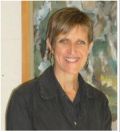
Jane Davidson graduated with a Ph.D. in Music Psychology from City University, London in 1991. From 1991- 1993 she was a Leverhulme Trust Postdoctoral Research Fellow. In 1993 she took up her first lecturing position at City University, London, moving on to University of Sheffield in 1995, to join a senior colleague in order to consolidate a research unit in music psychology and to instigate a masters program in music theatre studies. Between 1995-2005, Davidson was promoted at 3 yearly intervals to become a full professor. She joined the staff at The University of Western Australia in 2006 as the inaugural Callaway/Tunley Chair of Music. She is Research and Postgraduate Coordinator, Vocal Studies Coordinator and Director of the Callaway Centre, a significant research archive out of which she manages six funded research projects ranging from work on collections (specifically the ethnomusicologist John Blacking’s personal and research papers) to practical work such as developing a program to use music for health and wellbeing impact.
Zheng Zhang in 1999, started teaching English at a locally renowned international school and at the Central South University, China while doing his M.A. study in applied linguistics. In June 2002, Zheng started working as a full-time English teacher at Shanghai University of Electric Power and was granted several professional awards afterwards. Drawing on his teaching experiences, he also coauthored several books related to English literacy development. He is currently a PhD candidate at the University of Western Ontario. He’s research interests include biliteracy development, multiliteracies, transnational education, and family literacy programs for immigrant families. He’s previous research findings have been disseminated in the forms of journal articles and presentations at peer-reviewed conferences (e.g., Zhang, submitted, 2010a, 2010b, 2010c, 2009, 2008a, 2008b).
Rachel Heydon Associate Professor, Faculty of Education, The University of Western Ontario, is a former special education/literacy teacher. She coordinates the pre-service elementary language arts program and teaches graduate courses in curriculum theory and literacy. Her interests include language and literacy teaching, learning, and policy (particularly in regard to young children and other persons who are minoritized), intergenerational learning, disability studies, the development of curricula and educational and social policies that can lead to the improvement of children’s lives, and the development of curricula to support critically reflective teacher development. These interests are all firmly rooted in critical theory with its goal of emancipation. She has published two books, Early Childhood Curricula and the De-Pathologizing of Children (with Luigi Iannacci) and Constructing Meaning: Balancing the Elementary Language Arts (with Joyce Bainbridge and Grace Malicky), and published in a number of international journals including the Journal of Curriculum Studies, the Journal of Early Childhood Research, and Teaching and Teacher Education.

Stephen Clift is a Professor in the department of Health, Wellbeing and the Family at Canterbury Christ Church University, UK as well as Research Director of the Sidney De Haan Research Centre for Arts and Health.

Jennifer J. Nicol is a faculty member at the University of Saskatchewan, Canada as well as an Accredited Music Therapist and Registered Doctoral Psychologist.
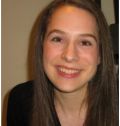
Dawn Merrett completed a BSc in Psychology and Neuroscience at the University of Lethbridge in 2007, where she received the gold medal for science. She worked under the supervision of Dr. Gerlinde Metz with rodent models of motor recovery after spinal cord injury and stroke. Currently, Dawn is enrolled in the MPsych (Clinical Neuropsychology)/PhD program at the University of Melbourne in Australia, supported by an Endeavor International Postgraduate Research Scholarship. She is supervised by Sarah Wilson, Isabelle Peretz, and Graeme Jackson. She is also an Associate of the Royal Conservatory of Music and previously maintained a private teaching studio for 10 years. She has been heavily involved in music education and in the promotion of music and the arts in the community, particularly with community choirs, festivals, and music programs in assisted living facilities. Dawn is now exploring her interest in music neuroscience and the influence of active music making, especially singing, on brain and behaviour.

Isabelle Peretz is a cognitive neuropsychologist and a professor of Psychology at the University of Montreal. She earned her Ph.D. in experimental psychology at the Université Libre de Bruxelles under José Morais in 1984. Dr. Peretz’s research focuses on the musical potential of ordinary people, its neural correlates, its heritability and its specificity relative to language. She has published over 150 scientific papers on a variety of topics, from perception, memory, and emotions to performance. Dr. Peretz is renowned for her work on congenital and acquired amusia and on the biological foundations of music processing. Her research has received continued support from the Canadian Natural Science and Engineering Council and the Canadian Institutes of Health Research since 1986. In 2004, The Université de Montréal earned her an endowed Casavant chair in neurocognition of music and in 2006, a Canada Research Chair in neurocognition of music. In 2005, Dr. Peretz became the founding co-director of the international laboratory for Brain, Music, and Sound research (BRAMS). In 2009, she was awarded Prix Justine & Yves Sergent, as well as Prix ACFAS Jacques Rousseau. She is a fellow of the Royal Society of Canada and of the American Psychological Association.
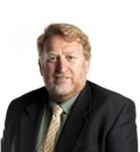
Graeme Jackson is a co-founder and director of the Brain Research Institute (now part of the Florey Neuroscience Institutes) and a neurologist at the Austin Hospital, Melbourne. He is a professorial fellow of the Department of Medicine Austin Health/Northern Health and an adjunct professor in the Department of Radiology at the University of Melbourne. He is internationally recognized as an expert and authority in new MR technologies, particularly in the field of animal and human studies of epilepsy. Graeme holds an honours degree in Psychology and a doctorate in Medicine.

Sarah Wilson is a clinical neuropsychologist and an associate professor and reader in Psychological Sciences at the University of Melbourne. She is the only specialist music neuropsychologist in Australia. She established and directs the Music Neuroscience Laboratory in the Psychological Sciences department, where her team conducts experiments across a range of auditory and music domains. Sarah has received numerous awards, successfully obtained competitive funding, and published widely, both within the music neuroscience field as well as in epilepsy and other clinical populations.

Jean Emmerson previously a teenage muffin. Strange but true: in her younger days, she toured Canada and the northern States with the band Martha and the Muffins. She is now a PhD student carrying out research under the supervision of Jennifer Nicol at the University of Saskatchewan. Ms. Emmerson has two undergraduate degrees, one in music and another in education (BFA, York; BEd, U of T), a graduate degree in counseling psychology (MA, Chicago) and certificates in special education and language (U of Toronto). These studies have shaped and informed her 20+ years of work experience in a variety of educational settings. She anticipates completion of her studies by Spring 2012. Her interest in AIRS pertains to research examining singing as a means to promote health.

George Tzanetakis Is an assistant Professor of Computer Science at the University of Victoria. He frequently teaches courses in Music Information Retrieval and Multimedia Processing, He received his PhD degree in Computer Science from Princeton University and was a PostDoctoral Fellow at Carnegie Mellon University working on query-by humming systems with Prof. Dannenberg and on video and audio retrieval with the Informedia group. In addition he was chief designer of the patented audio fingerprinting technology of Moodlogic Inc. He has consulted in audio and music related topics for companies including Nuance, Teligence and IVL. He is also the main designer and developer of Marsayas (http://marsyas.sness.net) a well-known open source software framework for audio content analysis such as feature extraction, segmentation, classification with specific focus on Music Information Retrieval (MIR). His work on musical genre classification received an IEEE Signal Processing Young Author award in 2004 and is frequently cited. He has presented tutorials on MIR and audio feature extraction at several international conferences. He is assistant editor of Computer Music Journal and was the chair of the Int. Conf. on Music Information Retrieval (ISMIR) in 2006. HE is also an active musician and has studied saxophone performance, music theory and composition.
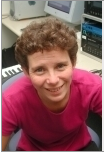
Katherine Stevens Is a cognitive psychologist who applies experimental methods to the study of auditory and temporal phenomena, including music, dance, and environmental sounds. She holds BA (Hons) and PhD degrees from the University of Sydney and established the Australian Music & Psychology Society (AMPS). Kate is an Associate Professor in Psychology and is Associate Director of the Music, Sound, and Action group in MARCA Auditory Laboratories at the University of Western Sydney.

Rena Sharon Is Professor of Collaborative Piano Studies at the University of Britsh Columbia, founder and Artisitic Director of the Vancouver International Song Institute (http://www.songinstitute.ca) and Artistic Co-Director of the Young Artist Experience Chamber Music program. An internationally renowned chamber music pianist, she has collaborated in concert and recording with many of the world’s great musicians. Her passionate interest in the interface of arts, humanities and science has led to her participation in diverse interdisciplinary research projects and conferences. She is a past recipient of the UBC Dean of Arts Award and a 2011 Distinguished Scholar in Residence at the Peter Wall Institute for Advances Studies.

